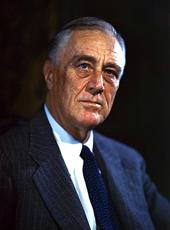By virtue of and pursuant to the authority vested in me by section 305 of the Communications Act of 1934 (48 Stat. 1083, 47 U.S.C. sec. 305), I hereby assign frequencies to Government radio stations and classes of stations as follows:
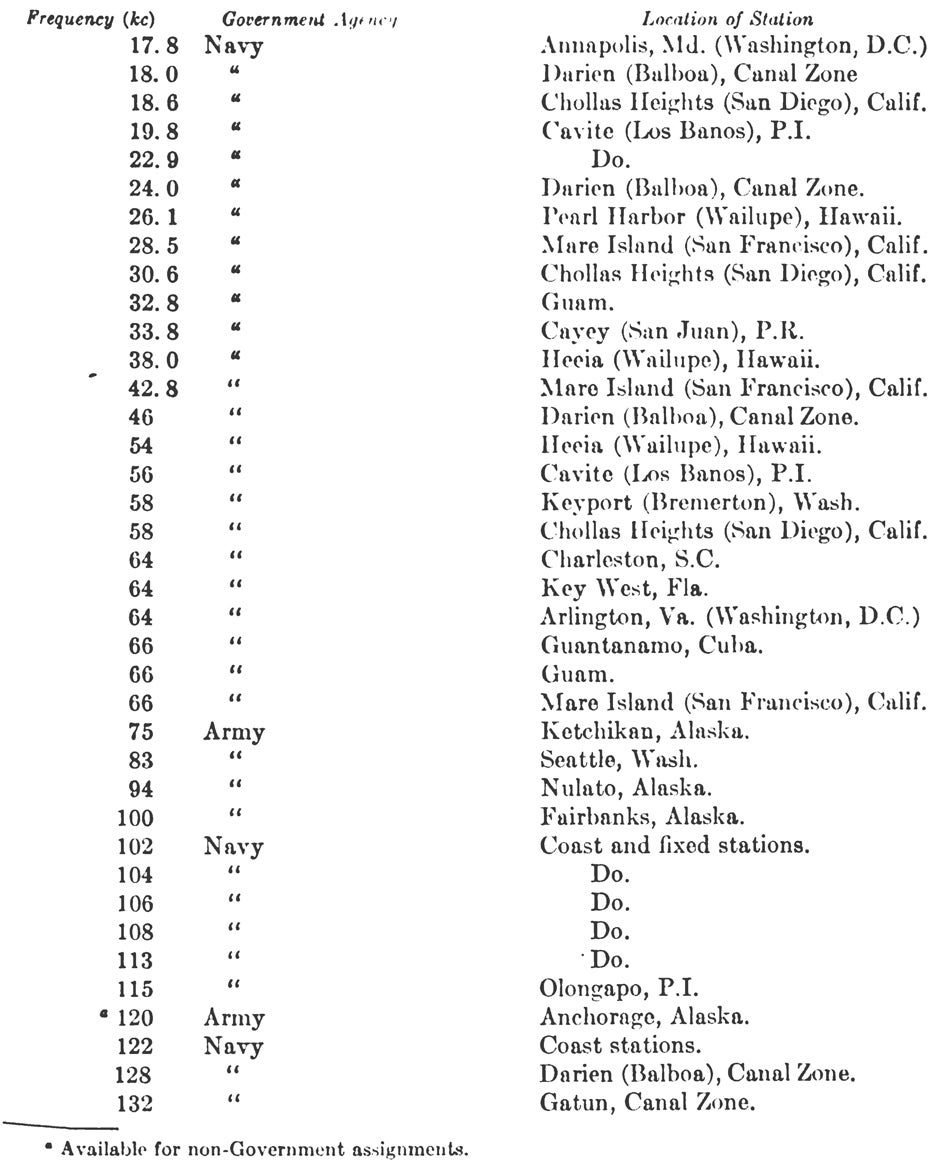
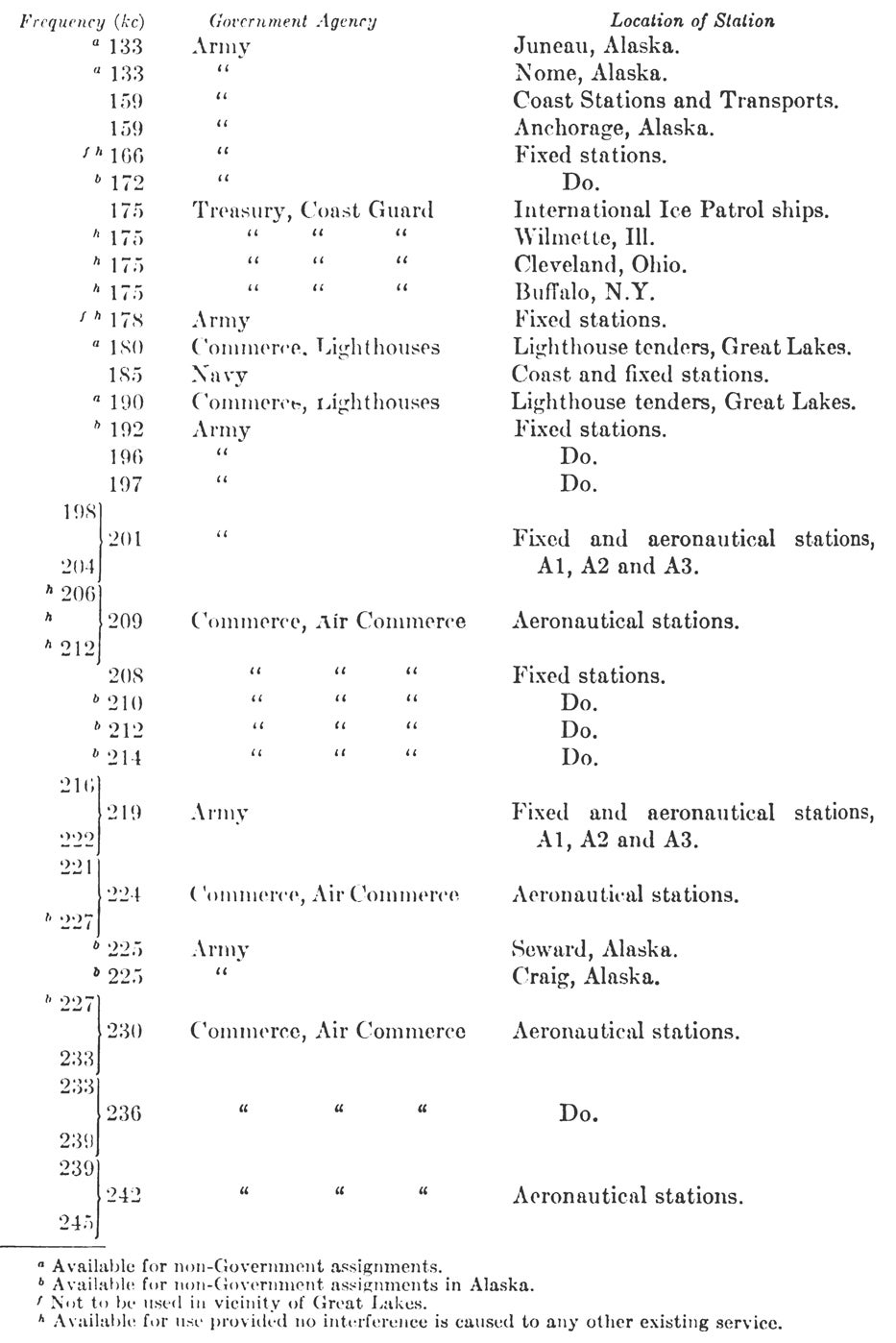
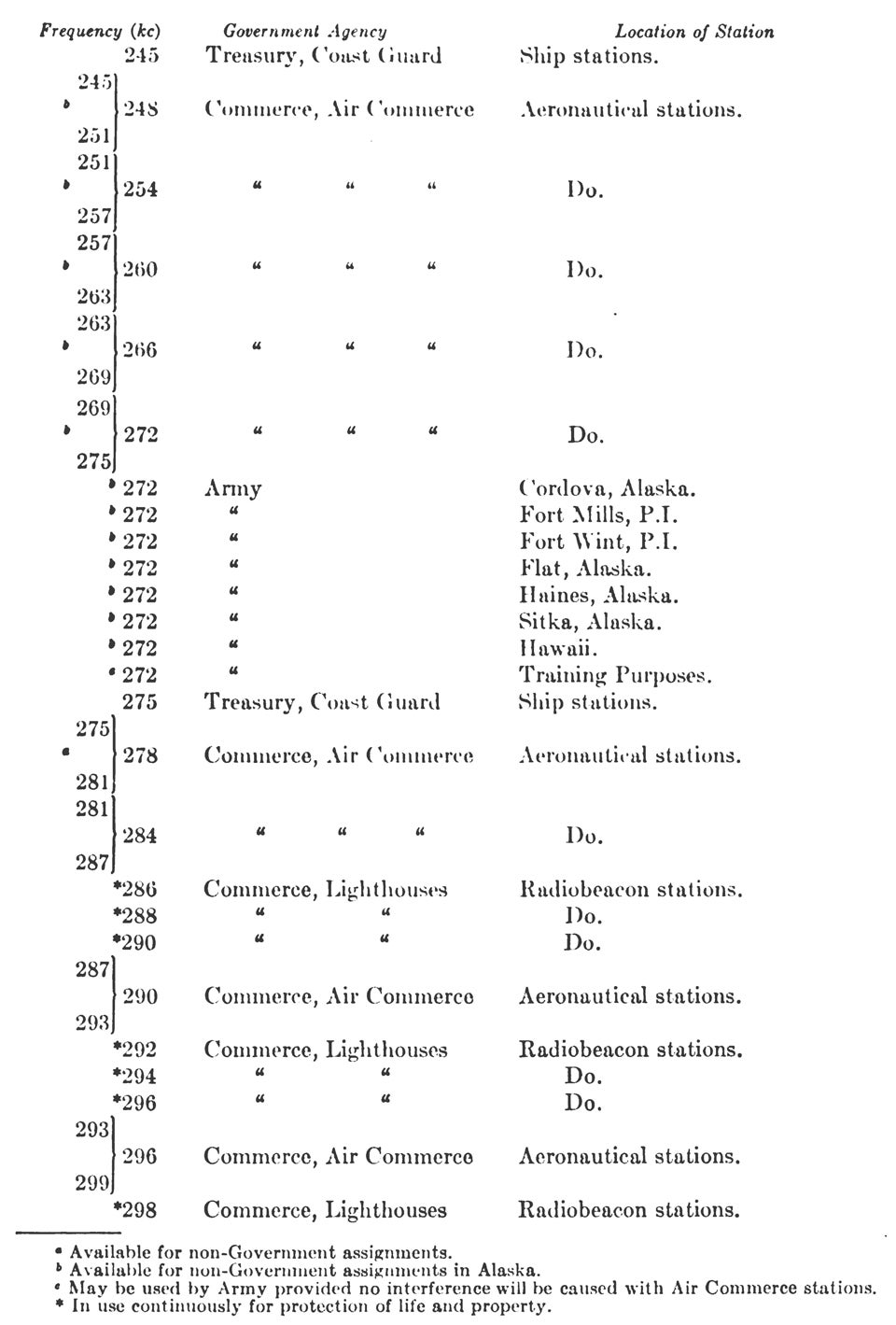
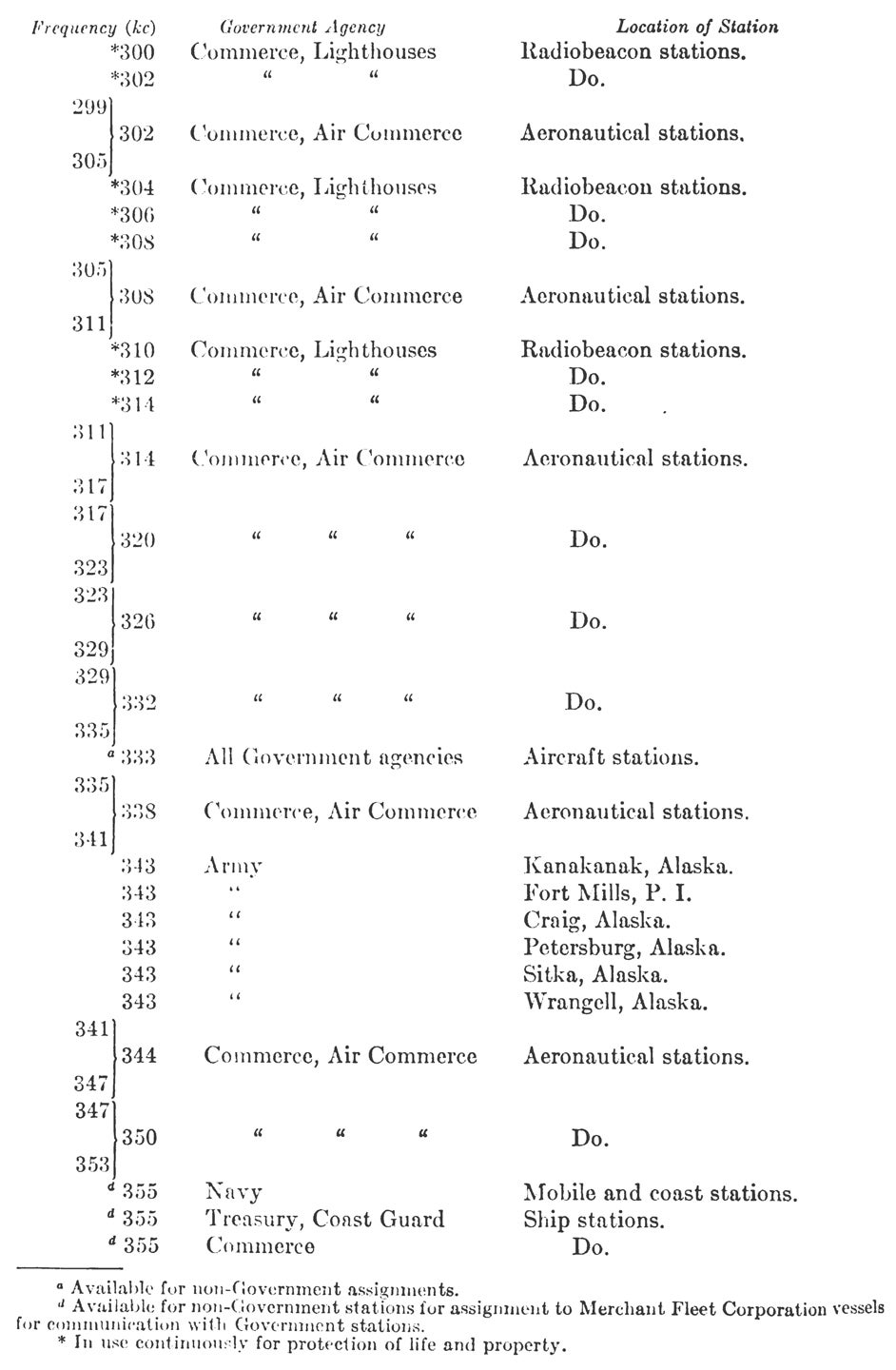
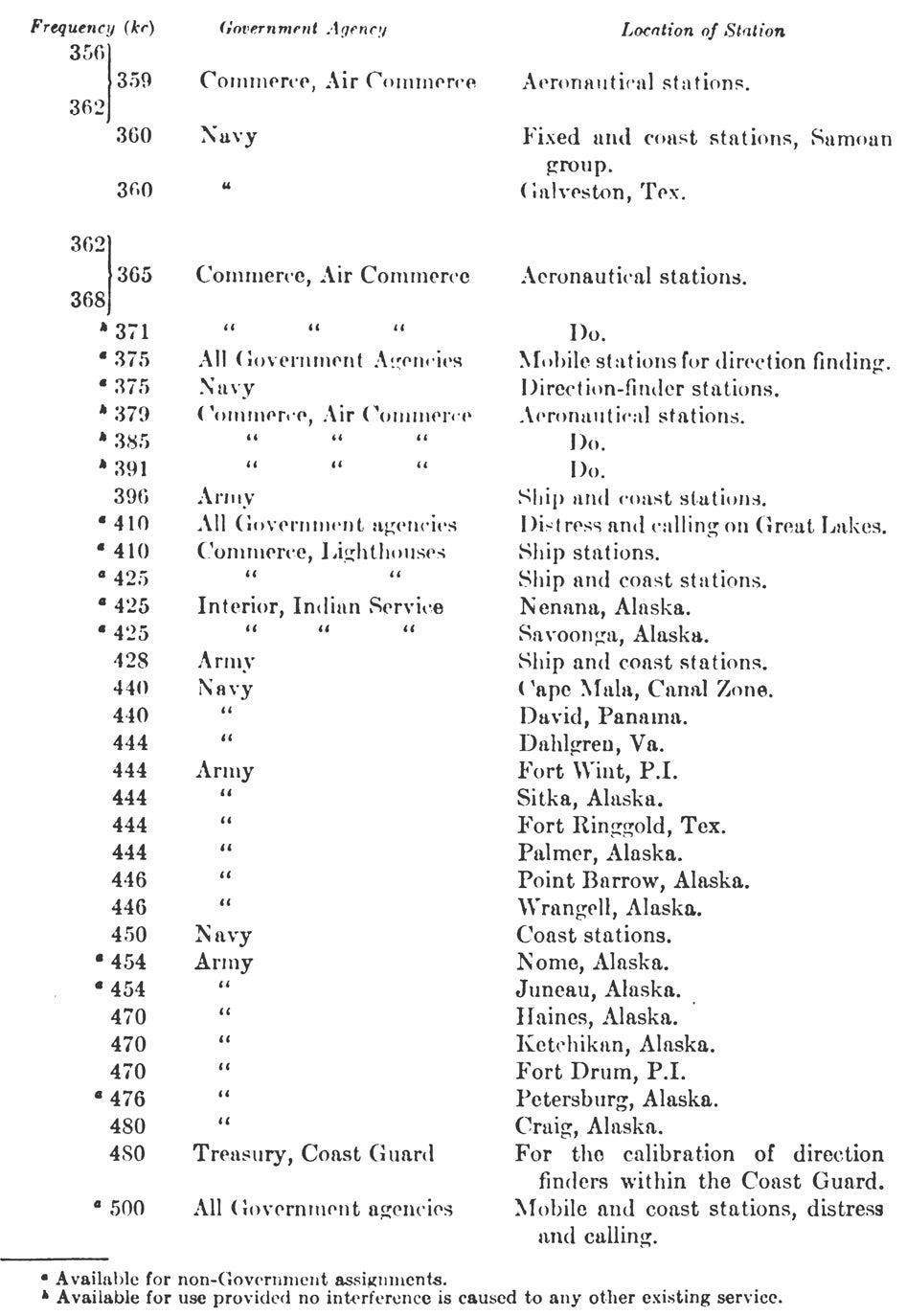

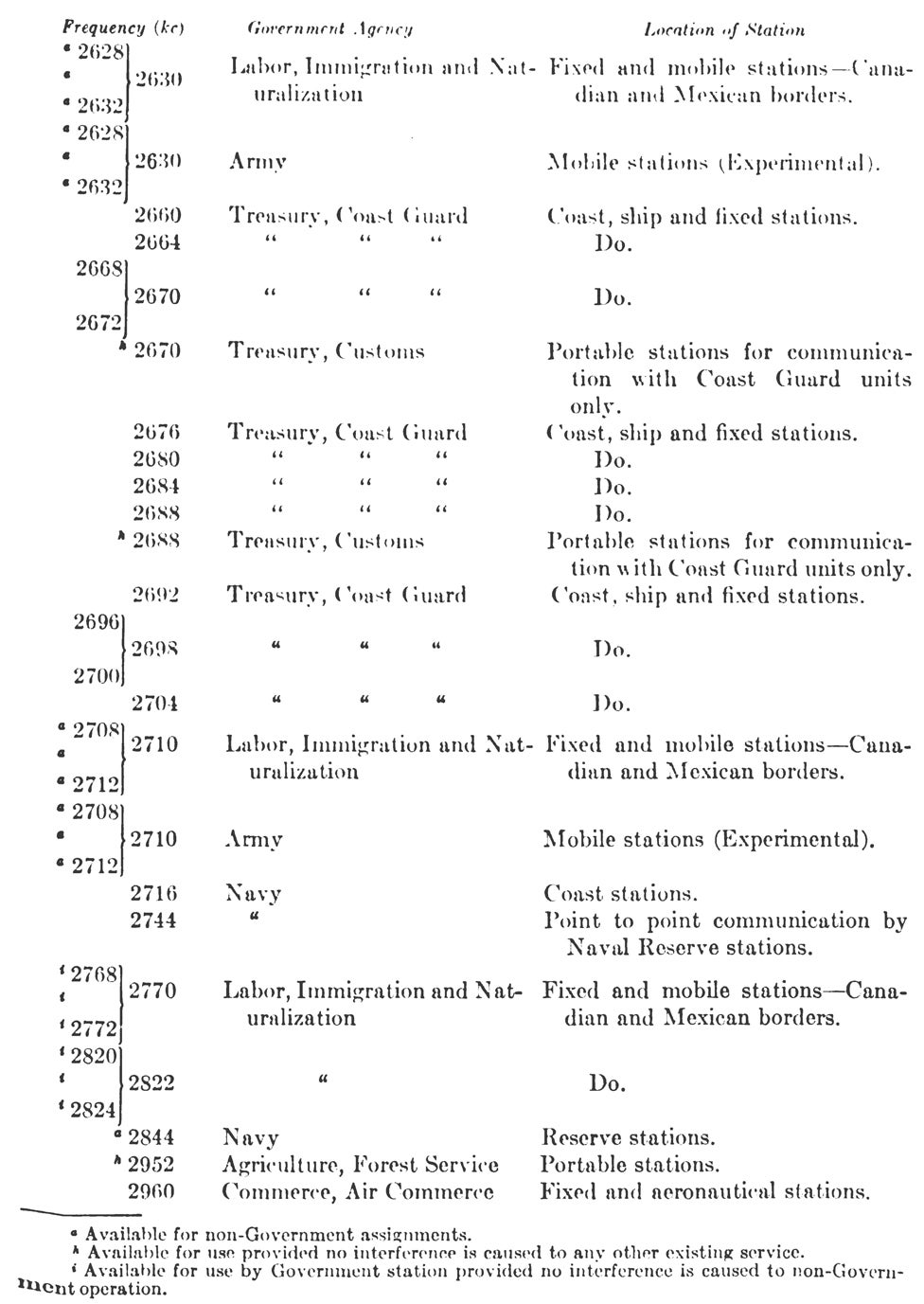





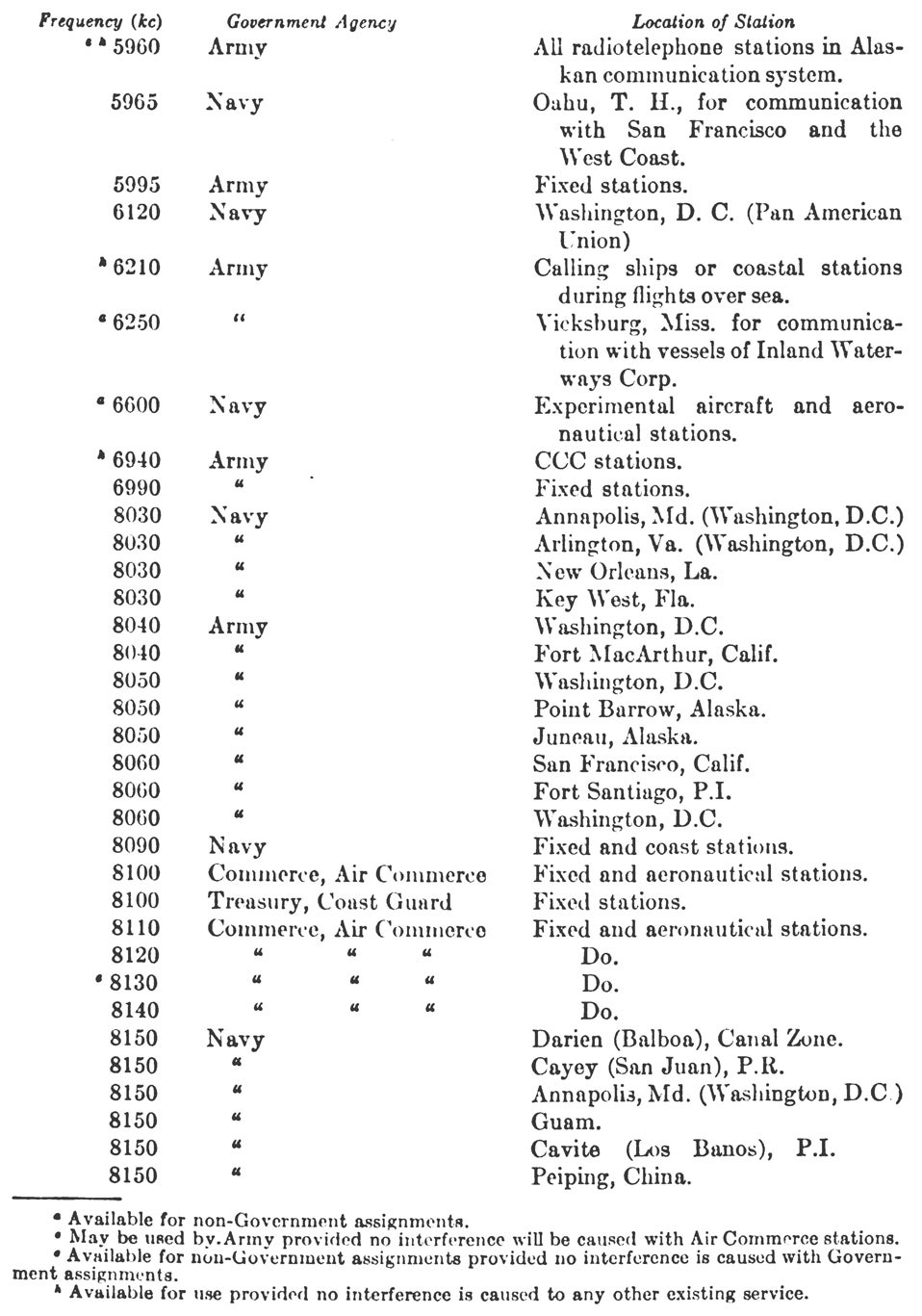
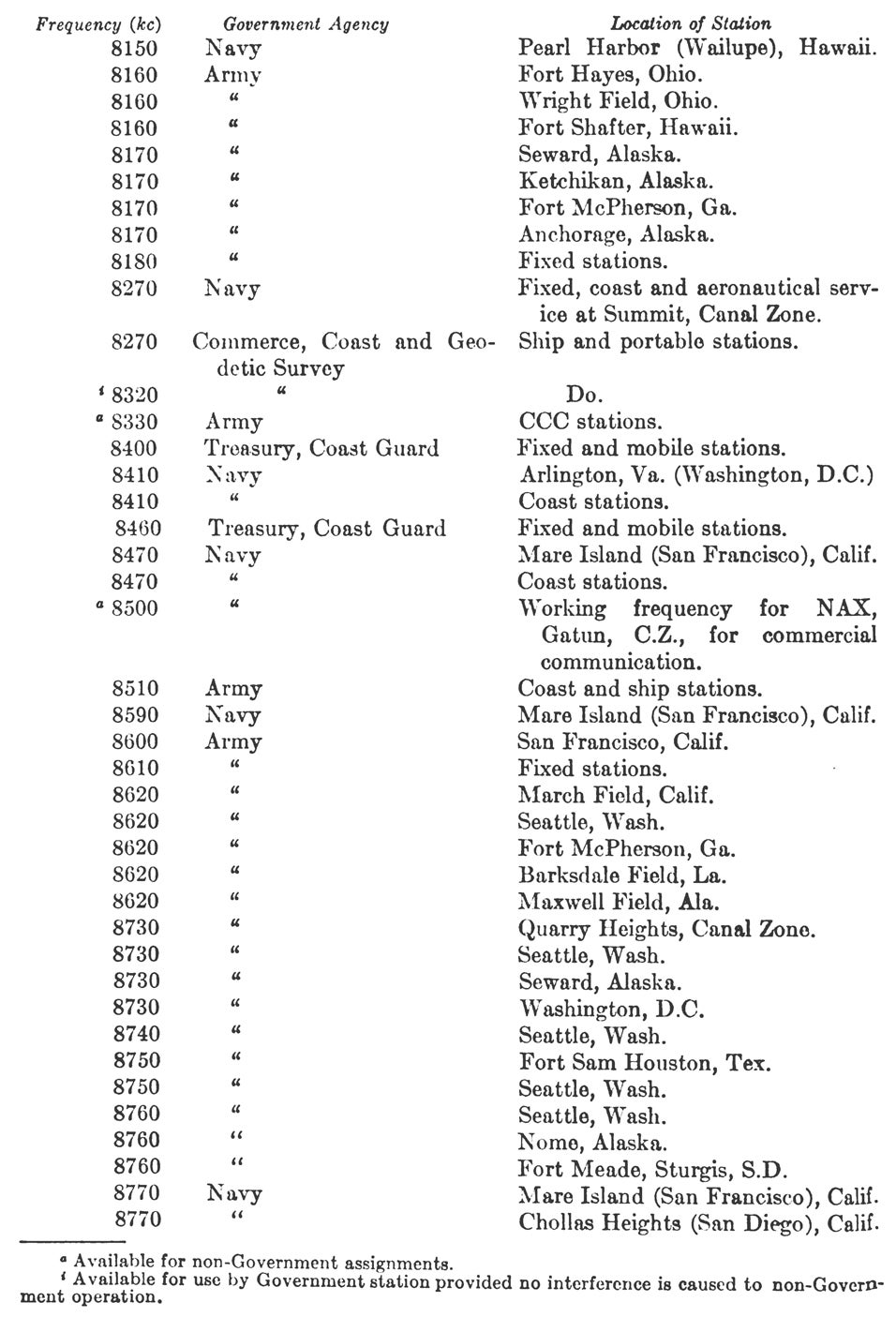

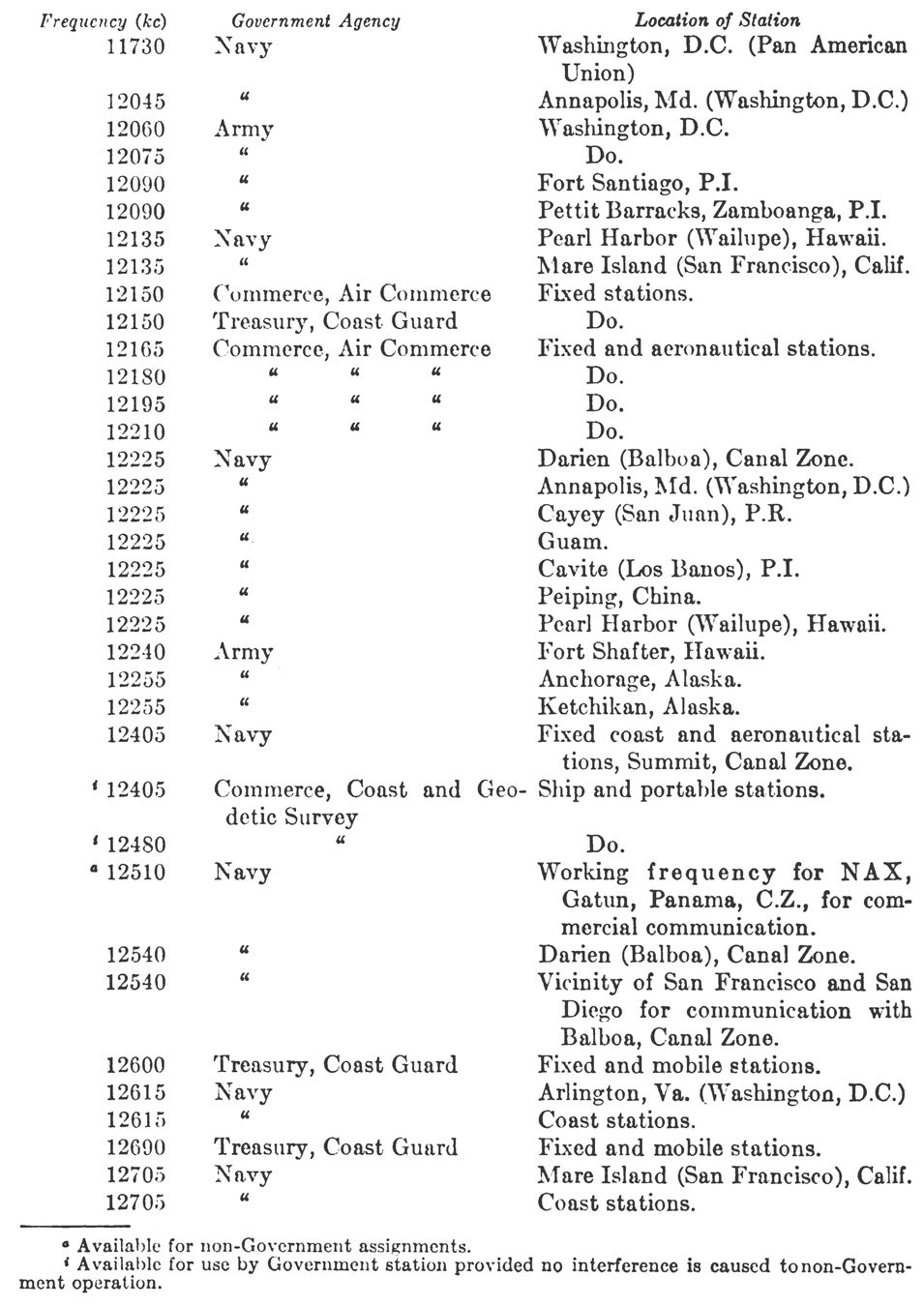
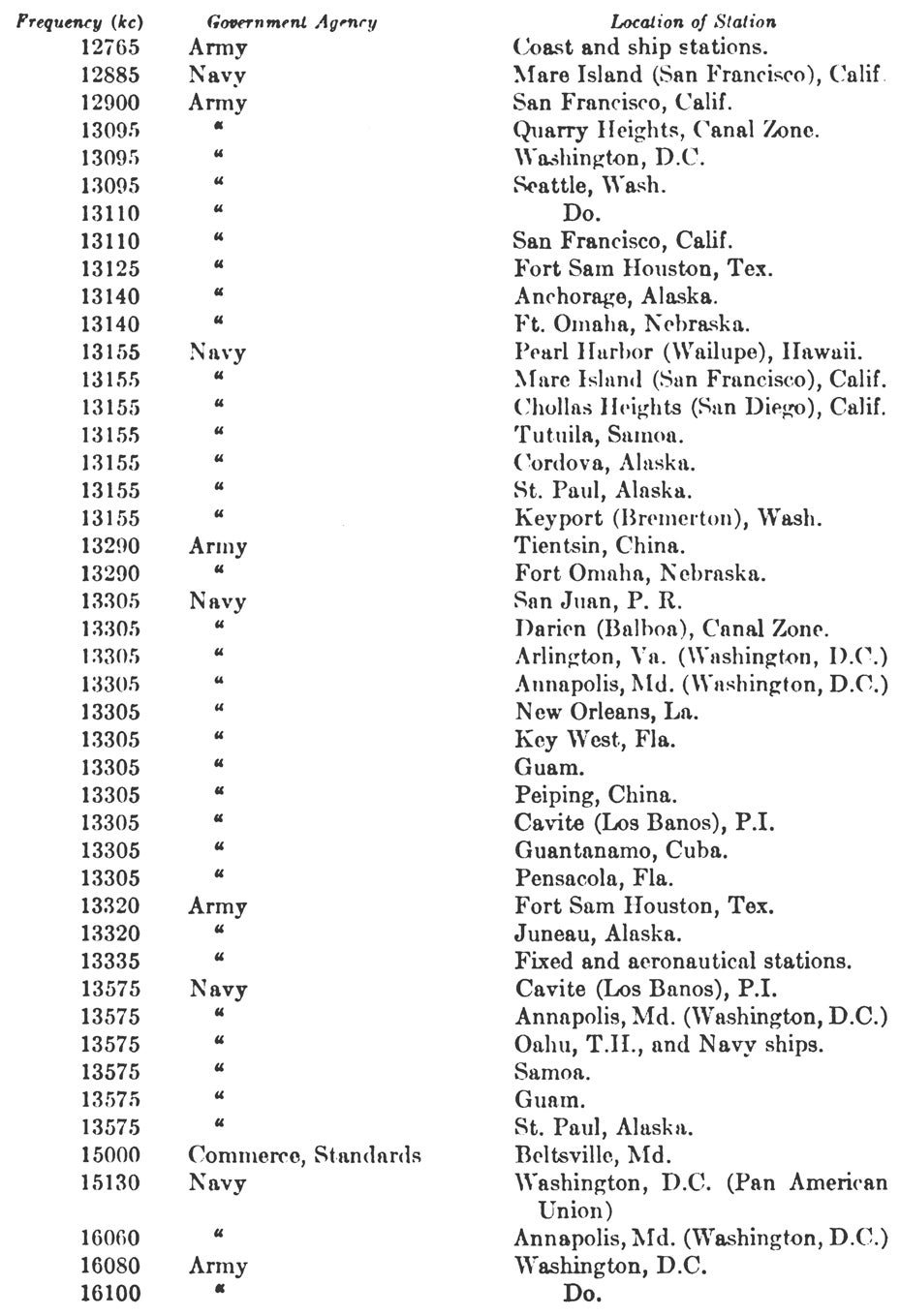
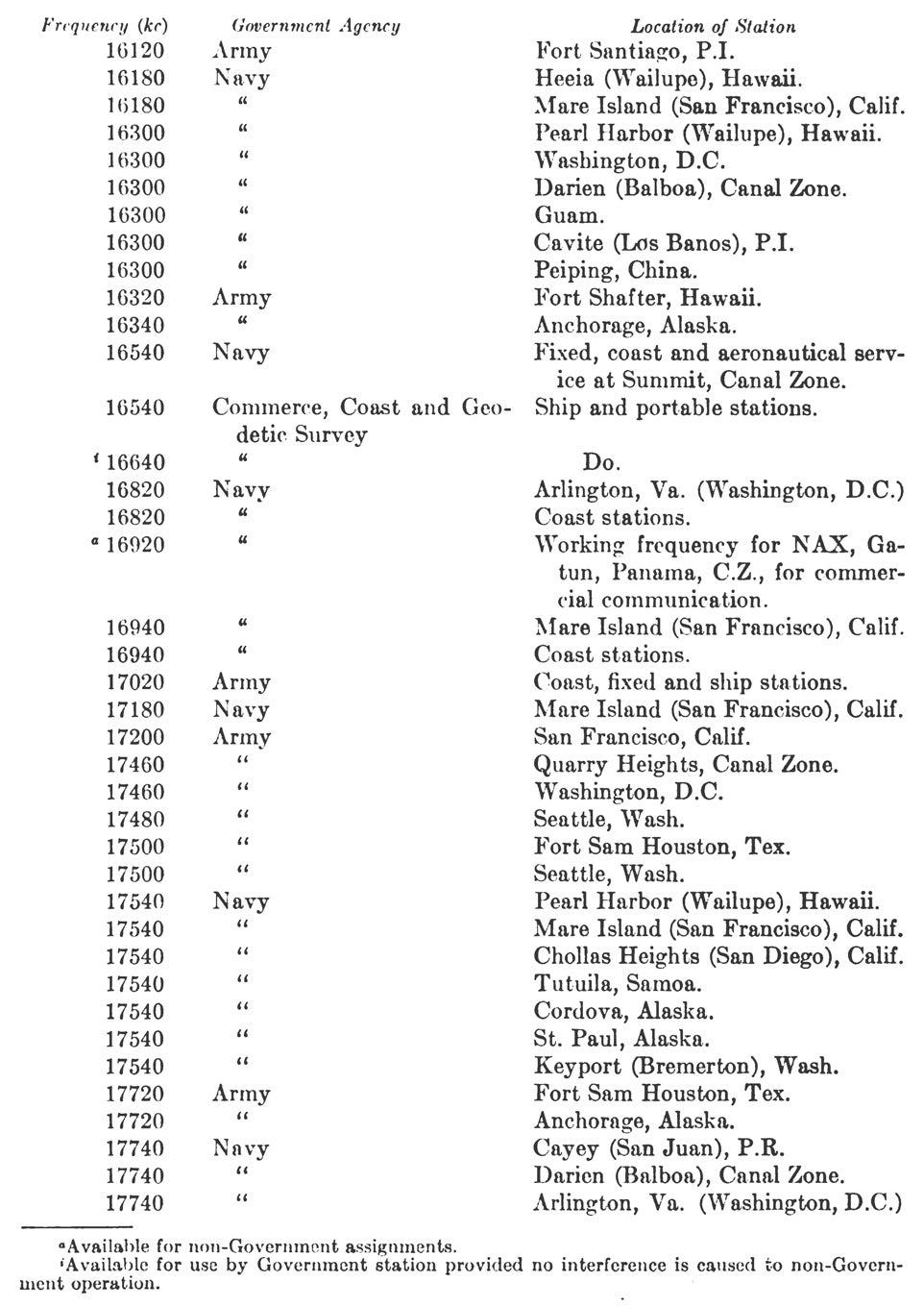
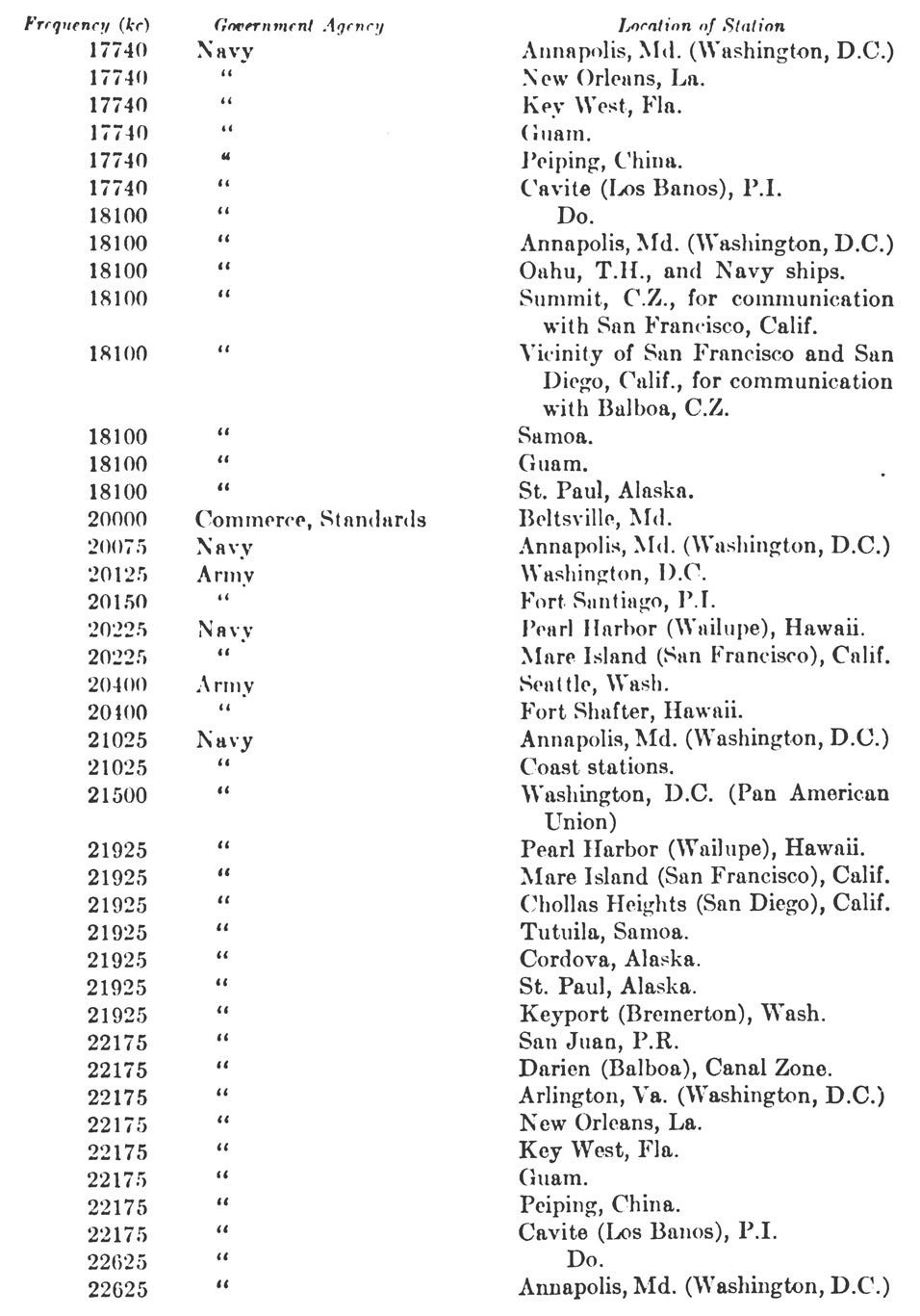
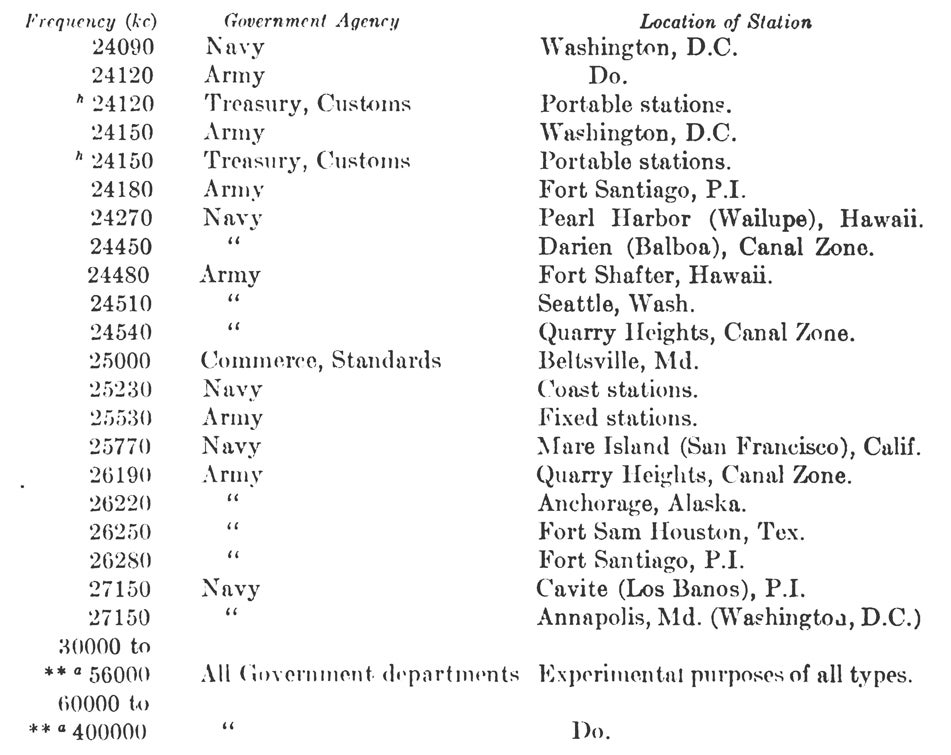
1. The following Government experimental radio stations are authorized to use miscellaneous frequencies from time to time provided no interference is caused with other authorized services:
Navy Department: Naval Research Laboratory, Bellevue, D.C. (NKF); Annapolis, Md. (NAK).
War Department: Fort Monmouth, N.J. (WLY); Wright Field, Ohio (WZAJ).
Department of Commerce: National Bureau of Standards, Washington, D.C. (WWV); Beltsville, Md. (WWV); Meadows, Md. (WWV)
2. The locations given are locations of the transmitting apparatus; and where control points are different, they are given in parentheses. Receiving stations are, in general, located at all transmitting stations and control points.
3. The following independent receiving stations have no transmitters:
Army....................Battery Cove, Alexandria, Va. Control center, Washington, D.C.
Do................Fort Lawton, Wash.-Control center, Seattle, Washington.
Navy...................Bellevue, D.C.-Control center, Washington, D.C.
Do................South San Francisco, Calif.-Control center, San Francisco, Calif.
Federal Communications Commission...Hingham, Mass.
Do................Baltimore, Md.
Do................Marietta, Ga.
Do................San Pedro, Calif.
Do................Portland, Ore.
Do................Great Lakes, Ill.
Do................Grand Island, Neb.
4. In cases where more than one agency is assigned the same frequency, relative priority, if existing, is indicated by the order of listing on separate lines.
5. A Government station may use for a period not exceeding two months frequencies other than those assigned to it for the purpose of selecting a frequency more suitable for a particular service before requesting authority for a change in frequency, provided that it first gives notice as to such use to the Interdepartment Radio Advisory Committee, and also to the Federal Communications Commission if the frequency is not assigned by Executive Order, and provided further that it will cease operation on notice of interference from the Interdepartment Radio Advisory Committee or the Federal Communications Commission. Such use may not be extended or renewed under the authority of this paragraph.
6. The Interdepartment Radio Advisory Committee may authorize any Government radio station to conduct experimental operations upon a frequency assigned to some other Government station by Executive Order, for such period as the Committee may deem necessary, provided that such station shall cease such operations upon receipt of notice of interference from the Interdepartment Radio Advisory Committee. The Interdepartment Radio Advisory Committee may also authorize interim operation on any frequency, pending issuance of a new Executive Order, with the same proviso.
7. Any frequency authorized by the Federal Communications Commission for ship service may be employed by Government mobile stations when communicating with non-Government stations.
8. Mobile stations of the Army, Navy, and Coast Guard when engaged in exercises may employ any of the frequencies allocated to mobile services, provided they cause no interference with the authorized services operating on the frequencies selected.
9. A non- Government mobile station may operate on a frequency assigned to a Government station in the mobile service when directed to do so by the latter.
10. No department shall close a station no longer needed by it which is serving other Government departments without first giving due notification to the other Government departments concerned.
This Executive Order supersedes Executive Order No. 6472 of December 2, 1933.

FRANKLIN D. ROOSEVELT
The White House,
December 19, 1935.
Related Images
Franklin D. Roosevelt, Executive Order 7251—Assignment of Frequencies to Government Radio Stations Online by Gerhard Peters and John T. Woolley, The American Presidency Project https://www.presidency.ucsb.edu/node/376952

